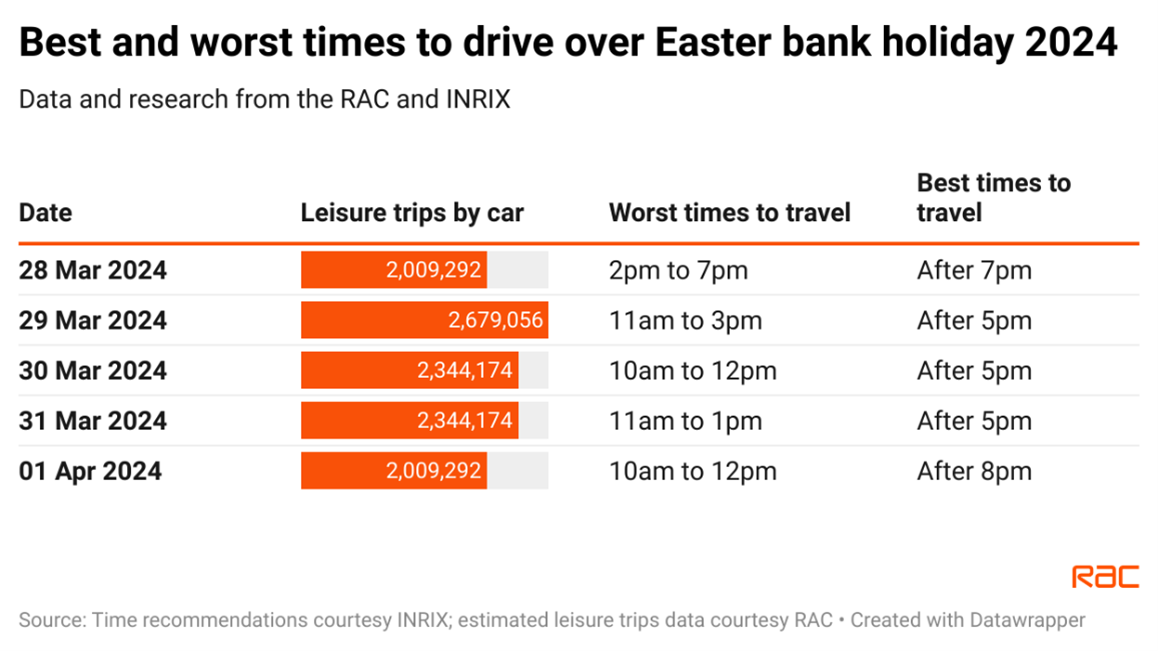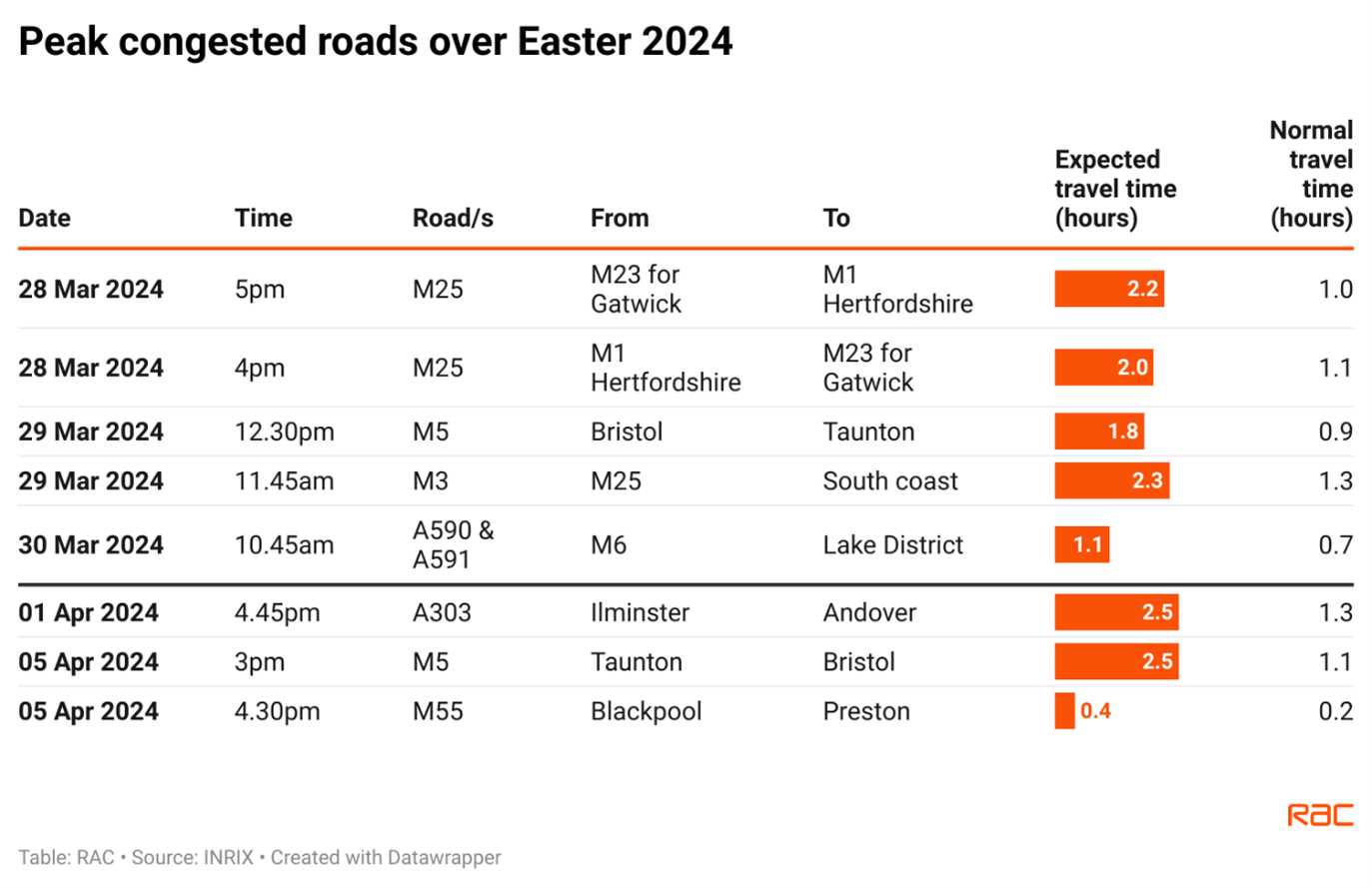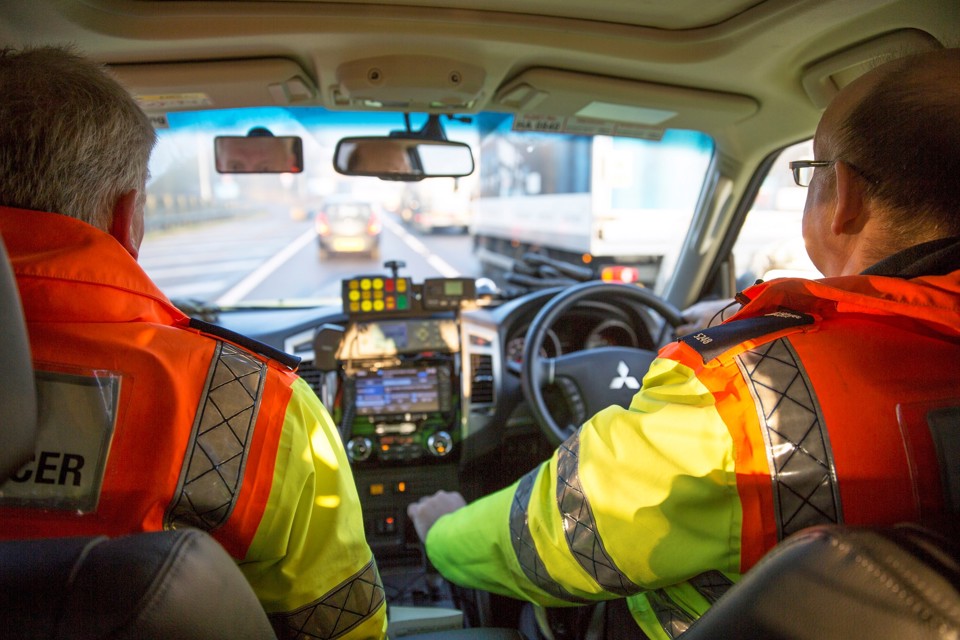National Highways is removing more than 850 miles of roadworks over the bank holiday weekend in an effort to ease congestion as new analysis shows traffic hotspots.
Good Friday is predicted to be the worst day for delays for drivers with an estimated 2.6 million getaway trips, according to analysis by the RAC and Inrix.
The estimated traffic on Good Friday is 600,0000 more than the 2 million journeys planned for both Thursday (March 28) – the day many schools break up – and Easter Monday (April 1).
There is also an increase in traffic volumes expected over Easter Saturday and Sunday with 2.3 million separate trips on each say.
Overall, Inrix and the RAC predict that there will be 14 million leisure journeys being made by car this Easter weekend.
RAC Breakdown spokesperson, Alice Simpson, said: “With Easter falling earlier than usual at the start of the school holidays, it could be ‘carmageddon’ for holidaymakers.
“Anyone who can delay leaving on Thursday 28 March until much later in the evening or set off as early as possible on Good Friday is likely to have a better journey than those who travel during the peak periods of the day.”
In an effort to ease congestion, National Highways is lifting more than 850 miles of roadworks.
It means that around 98% of England’s motorway and major A road network will be free from roadworks over the holiday period.
Roadworks will be removed by 6am on Thursday (March 28) and not put back until Tuesday (April 2).
Andy Butterfield, customer services director at National Highways, said: “This is the first bank holiday of the year, so we expect the roads to be busy with people looking to make the most of a long weekend.”
An additional one-in-10 drivers (10%) are planning a trip over the Easter weekend but are undecided exactly when they’ll hit the road, leading to an estimated 3.3 million more trips staggered over these dates.
Transport analytics specialists Inrix predict traffic to be heaviest between 2pm and 7pm on Thursday (March 28) as getaway traffic combines with people making regular commuting trips.
The busiest route is expected to be the M25 in both directions between the M23 for Gatwick and the M1 in Hertfordshire from 4pm, with journeys on this stretch taking over two hours – more than double the usual time.
Meanwhile, on Good Friday, the lengthiest delays are expected between 11am and 3pm, with drivers advised to start their trips as early as possible in the morning or delay them until later the afternoon.

Two popular routes for holidaymakers – the M5 southbound between Bristol and Taunton and M3 between the M25 and the south coast – are predicted to be affected by some of the longest jams, with journey times extending to one hour 48 minutes and two hours 18 minutes respectively – twice as long as usual.
For those spending the first full week of the Easter holidays away from home, the busiest route to return on will be the M5 northbound between Taunton and Bristol on Friday, April 5, at 3pm, where it will take an estimated two and a half hours to travel.
Simson said: “On every journey there are key pinch points where you can save yourself lots of valuable time if you can get through before everyone else.
“This will be especially true over the whole Easter holidays as our research shows two-thirds (64%) of drivers will be making a leisure journey on major roads at some point.
“Lengthy queues can be expected along routes to the usual hotspots like the West Country, the Lake District and the south coast, especially during the middle of the day when most people make trips.
“While a good proportion of drivers aren’t yet tying themselves to a date, there may be even more cars on the road than anticipated if the sun decides to make an appearance.”
Bob Pishue, Inrix transportation analyst, explained that, though travel times will peak on Thursday and Friday afternoons, drivers should be prepared for longer journeys than normal throughout the entire weekend.
“To avoid the longest delays, we advise adjusting departure times so you’re not travelling in peak commuter hours,” he said.
“Knowing when and where congestion will build can help drivers avoid the stress of sitting in traffic.”






















Login to comment
Comments
No comments have been made yet.